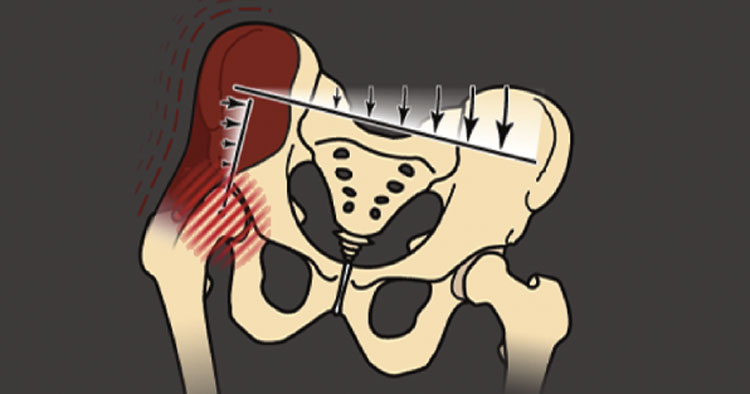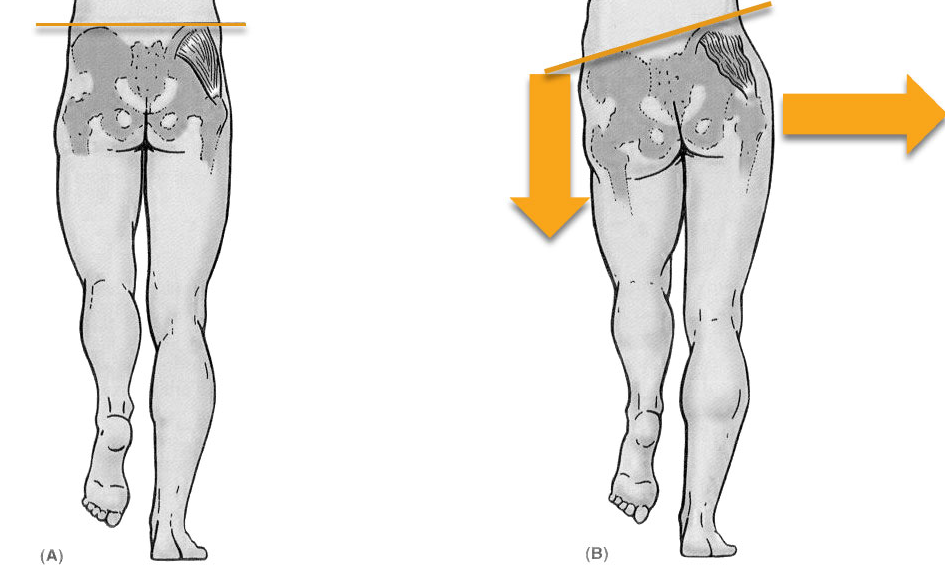Injury Rehabilitation and Training, Muscle Pain and Tendinopathy
Trendelenburg Gait A Sign Of Poor Hip Function
What Is A Trendelenburg Gait
The Trendelenburg gait sometimes referred to as the gluteus medius lurch, is an abnormal gait pattern resulting namely from the weakness of the hip abductor muscles. More specifically, this gait pattern is considered to be mainly a result of weakness of the gluteus medius and gluteus minimus muscles. Such weakness may come about among other things as the result of: either direct injury to the bone, muscle, tendon or nerve complex of the hip and hip abductors, post surgically such as following a total hip replacement surgery, or as the result of a stroke…
Normal Gait And Single Leg Stance Postures
Ideally in standing each of your legs bear half your body weight and when one leg is lifted the other (weight bearing leg) subsequently takes the entire body weight. As occurs with single leg standing poses, or during the stance phase of walking and running activities.
Biomechanically normal pelvis action with single leg stance postures if for the trunk to incline towards the weight bearing leg. This small shift in posture is achieved by the action of the hip abductor muscles on the weight bearing leg and as a result the pelvis tilts rising on the side not bearing weight. With hip abductor weakness and a Trendelenburg’s gait pattern this mechanism fails and the pelvis drops, rather than rising on the unsupported side as can be seen in the image below with the yellow arrows.
As previously mentioned during walking or running activities, on the stance leg side (weight-bearing extremity) ideally when things are functioning normally the pelvis tilts downwards subsequently hiking up on the non-weight bearing side of the pelvis allowing the non-weight bearing leg to clear though past the ground during the swing phase. Meaning the non-weight bearing leg doesn’t catch the ground as it swings through towards making foot contact.
In the presence of hip abductor weakness and a resulting Trendelenburg gait this can make it difficult to support the body’s weight on the affected side. This gait pattern is caused by unilateral weakness of gluteal muscles, where rather than the pelvis tilting upwards on the non-weight bearing limb it tilts downwards and distinctive compensatory trunk movements result as the body shifts in an attempt to maintain the individuals centre of gravity.
The Trendelenburg Sign
A Trendelenburg sign indicates weakness of hip abductor muscles and could be considered a test of hip function. In a “positive” Trendelenburg’s sign (as seen in image (B) above) the body is unable to maintain centre of gravity standing on a single leg and as a result the body shifts weight across towards the stance leg, when asked to stand on one leg. With a “positive” Trendelenburg’s sign the weakened hip abductors on the weight bearing side, mean the pelvis sags downwards toward the unsupported side. In an attempt to lessen this effect the individual will compensate by laterally tilting their trunk away from the weak stance side in an attempt to maintain their centre of gravity on the side of their stance leg and reducing the pelvic drop.
Disclaimer: Sydney Physio Clinic provides this information as an educational service and is not intended to serve as medical advice. Anyone seeking specific advice or assistance on Trendelenburg Gait A Sign Of Poor Hip Function should consult his or her personal trainer, physiotherapist, general practitioner or other appropriately skilled practitioner.




Following a botched THR in 2022. 3 complete rounds of PT, and 2 doctors later, I continue to walk with Trendelenburg Gait. I am unable to walk on uneven surfaces and can only do steps one at a time. All the exercise in the world will not cure TG. Suggested Exercises like Squats, Planks, Standing Fire Hydrants are IMPOSSIBLE for someone with TG.